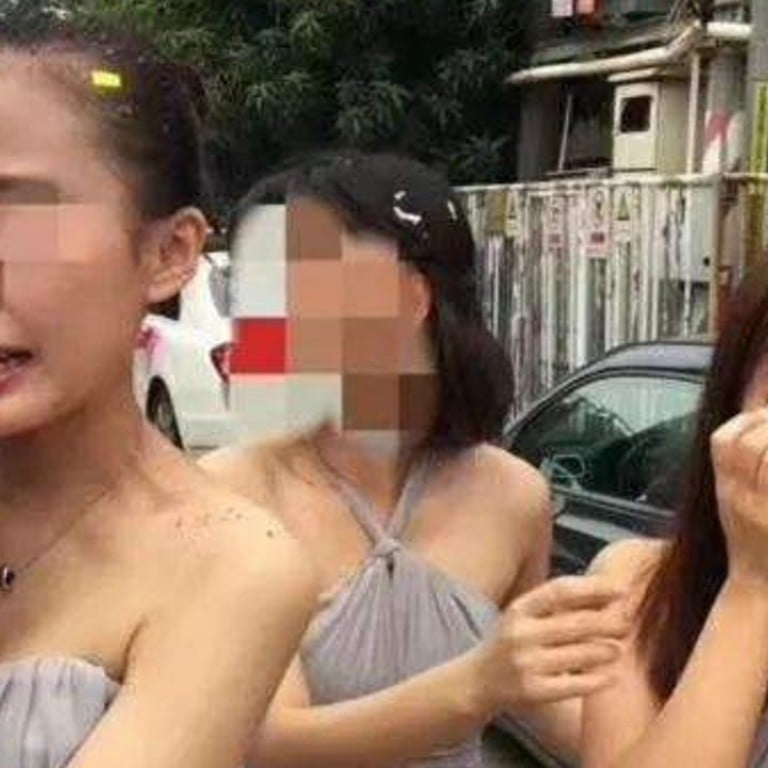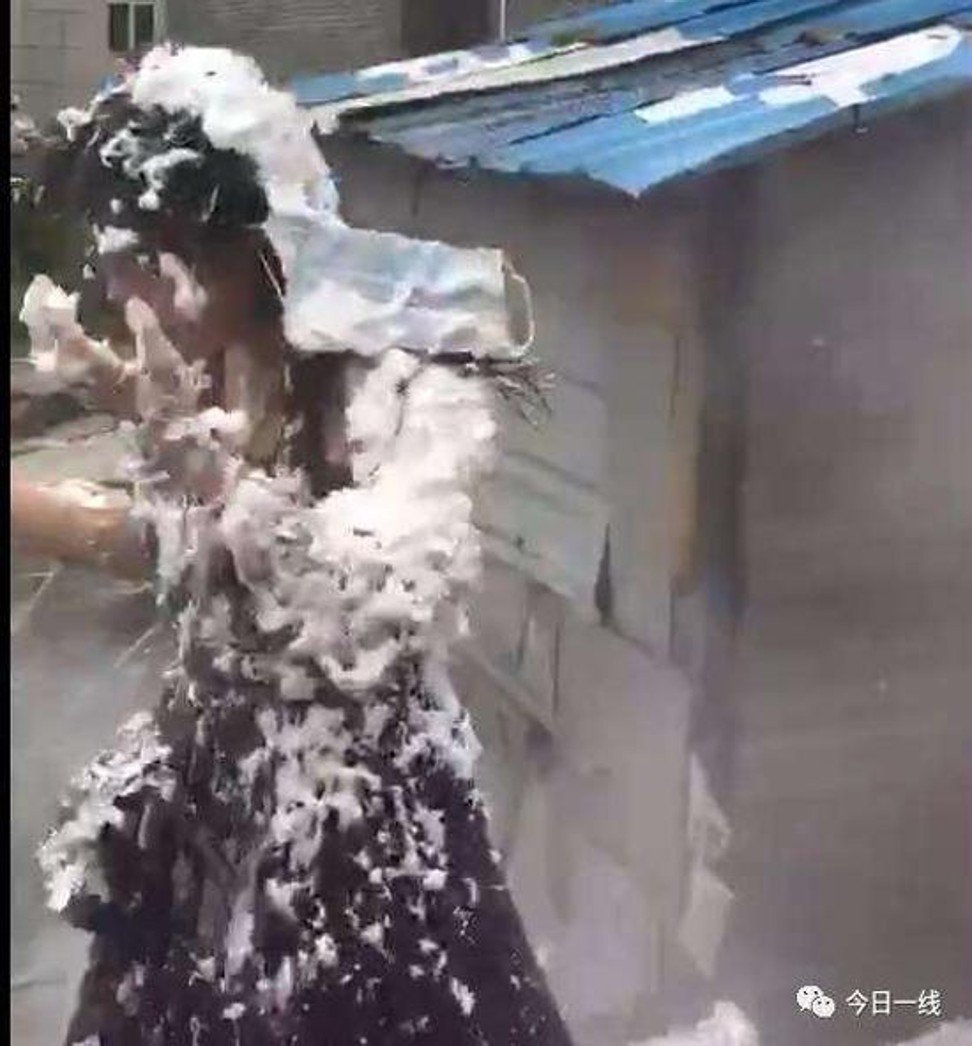
Bloody rites: has wedding hazing crossed the line into violence in China?
A modern take on a traditional Chinese custom meant to expel evil spirits has gone beyond a joke, observers say
It was the wedding ritual that turned into a bloody nightmare.
Three bridesmaids at a Shenzhen wedding were cut in the face by shards of glass sent flying by a groomsman pounding a door with an axe. His goal: to help the groom enter a house to pick up his bride – a common wedding day rite in China.
A video of the debacle went viral in China last weekend. It showed the man slamming his axe against the iron and glass door. At first, other members of the wedding party cheered but the cheering stopped when the bridesmaids and a videographer started bleeding.
It was just one of many weddings this year where the traditional Chinese custom of hunnao, or wedding hazing, a practice originally meant to expel evil spirits that has devolved into assault.
The revelry is meant to create a fun carnival atmosphere for the bridal party and has remained popular despite widespread criticism. Newlyweds and their parents choose to tolerate the jokes even when they cross a line – so as not to ruin a supposedly joyous occasion, according to observers.
Late last month, a groom in Tianjin passed out after several guests set off dry powder extinguishers aimed at him on his way to the bride’s home, according to another video circulating online. The man collapsed into a relative’s arms after inhaling too much powder. Onlookers feared he was dying but he eventually got back on his feet and continued on his way to his bride’s home.
At a wedding in Xian in June, two men pushed a bridesmaid into a wedding car and groped her breasts, ignoring her pleas to stop. The scene was caught on camera and triggered a public outcry, leading to the duo’s detention later for sexual assault.
Grooms and bridesmaids are not the only victims. Often the bride is forced to mime sexual acts with the groom; in some cases, even the groom’s parents become a target of practical jokes – being forced to put on humiliating costumes, for example.

Hou Hongbin, a Guangzhou-based feminist writer, calls wedding hazing “sexualised revelry”.
“From the newlyweds to the bridesmaids and groomsmen, none of them dares to take offence because as a saying goes, ‘there are no rules in the first three days after a wedding’. People tend to adopt a tolerant attitude towards hazing,” Hou said.
Hazing also was an abnormal outlet for repressed sexual desire, she said, echoing a line from director Ang Lee’s film The Wedding Banquet.
Hou said that in ancient China, young people were not educated about sex so hazing purportedly offered clues about what awaited them on their wedding night.
Today, friends often pass along the practice from one wedding to another to repay what is perceived as a debt of gratitude.
“For example, a man may ask his friend to allow obscene acts to [be done to] the bridesmaids at the latter’s wedding, on grounds that when he marries, he provides an opportunity for the latter to do similar things,” Hou said.
Meng Jun, who manages the wedding organiser Sunny Xipu in Zibo, Shandong province, where hazing is keenly observed, said it had become increasingly difficult to find a bridesmaid in the city because of the fear that sexualised banter at weddings had instilled in young women.
“A few years ago the targets of hazing in Zibo were mainly bridesmaids who were often single and shy,” Meng said. “But many were offended, not only verbally, but physically. So now we start to play the jokes on grooms.”
She said the common practice locally was to tie a groom to a tree in the street and force him to sing or wear funny outfits.
“As an organiser, we believe that this helps inject a happy tone to their big days. But if it’s too much, we will stop them,” she said. The bottom line is that “they don’t get hurt, either physically or emotionally”.

The tradition of hazing dates back to at least the Northern Song dynasty (960-1127). The Chicken Ribs Collection, or Ji Lei Bian, a collection of historical stories and contemporary anecdotes by Zhuang Chuo, described the proceedings of a wedding at which a bride sat in her bridal chamber and triednot to take offence at any ribald commentary or touching by male guests.
Fudan University anthropologist Pan Tianshu said traditional wedding rituals were cut back after the founding of the People’s Republic. But since the end of the 1970s, old wedding customs and classic displays of splendour had been revived and new elements injected into old rituals such as hazing.
Pan said lewd banter and roughhousing were traditionally common elements of weddings in China but the extent of the hazing varied from one area to another.
Traditional proceedings had a rebirth after China opened up to the West. But “people often reinvent activities such as practical jokes in the name of tradition, and some of them became new customs”, he said.



